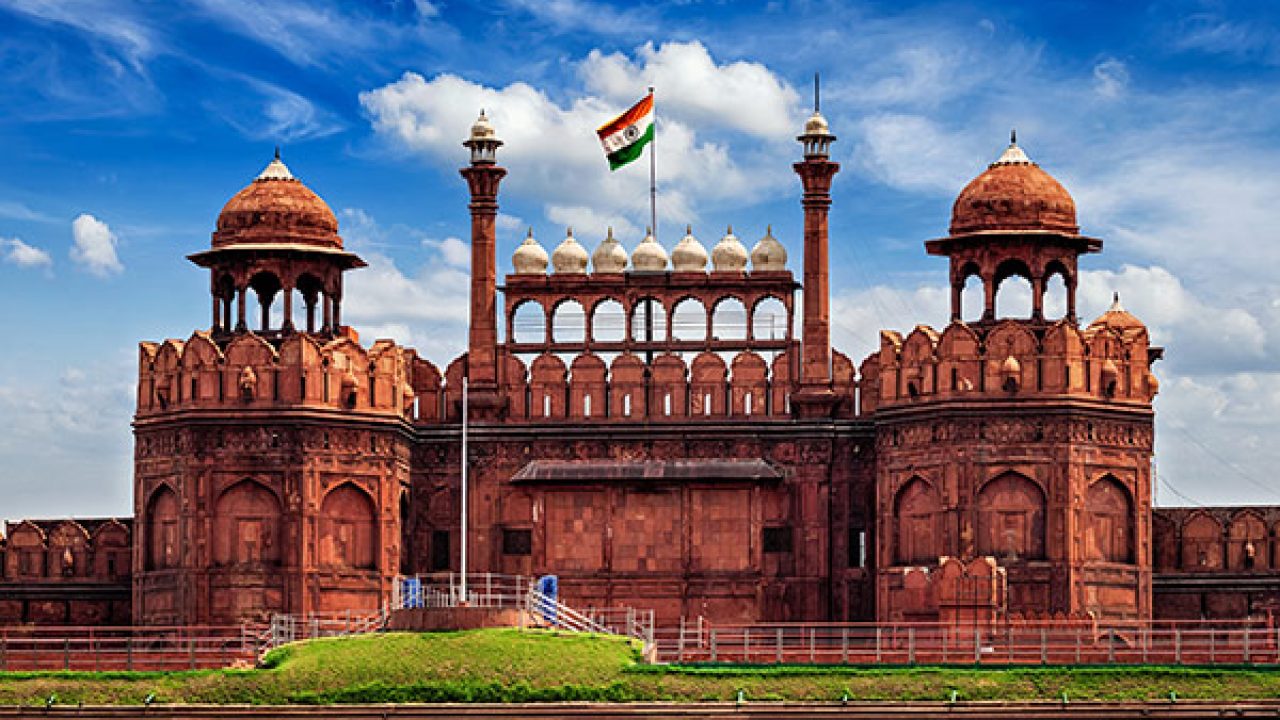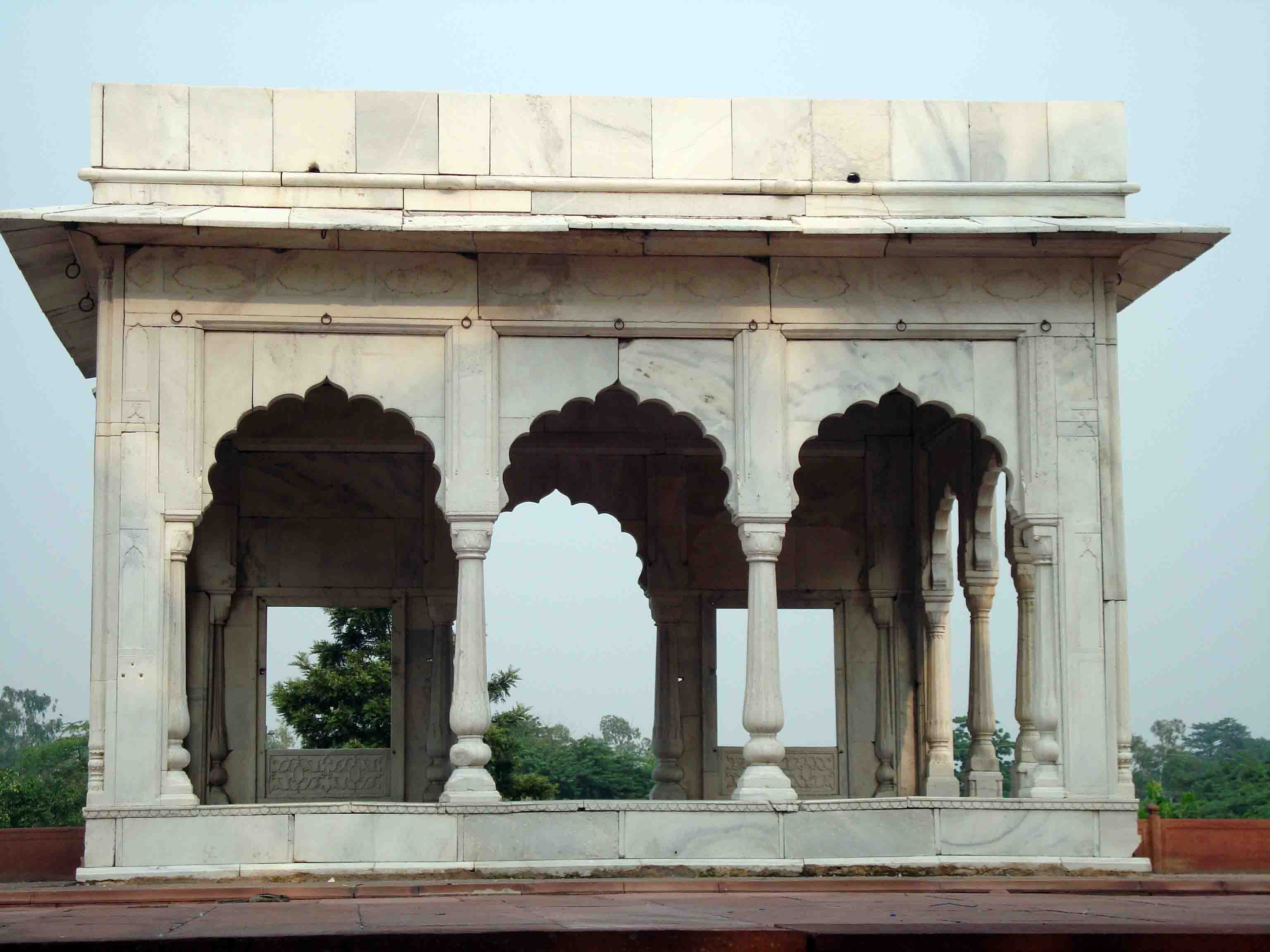The Red Fort is a historic fort in the city of Delhi in India, Located in the center of the city, it was the main residence of the emperors of the Mughal dynasty. It was constructed by Shah Jahan in the year 1639 as a result of a capital shift from Agra to Delhi. This imposing piece of architecture derives its name from its impregnable red sandstone walls. In addition to accommodating the emperors and their households, it was the ceremonial and political center of the Mughal state and the setting for events critically impacting the region. Today, this monument is home to a number of museums that have an assortment of precious artifacts on display. Every year, the Indian Prime Minister unfurls the national flag here on the Independence Day (15th August).

Formerly known as Quila-e-Mubarak or the Blessed Fort, the Red Fort lies along the banks of the river Yamuna, whose waters fed the moats surrounding the fort. It was a part of the medieval city of Shahjahanabad, popularly known today as 'Old Delhi'. The entire fort complex is said to represent the architectural creativity and brilliance of Mughal architecture. With so much history and heritage associated with it, the Red Fort is one of the most popular monuments in India and a major tourist attraction in Delhi. It became a UNESCO world heritage site in 2007. The Archaeological Survey of India is at present responsible for the security and preservation of this magnificent monument.
The Red Fort has an area of 254.67 acres (103.06 ha) enclosed by 2.41 kilometres (1.50 mi) of defensive walls, punctuated by turrets and bastions and varying in height from 18 metres (59 ft) on the river side to 33 metres (108 ft) on the city side. The fort is octagonal, with the north-south axis longer than the east-west axis. The marble, floral decorations and double domes in the fort's buildings exemplify later Mughal architecture.
:max_bytes(150000):strip_icc()/GettyImages-507585033-5b515477c9e77c005b93011e.jpg)
It showcases a high level of ornamentation, and the Kohinoor diamond was reportedly part of the furnishings. The fort's artwork synthesises Persian, European and Indian art, resulting in a unique Shahjahani style rich in form, expression and colour. Red Fort is one of the building complexes of India encapsulating a long period of history and its arts. Even before its 1913 commemoration as a monument of national importance, efforts were made to preserve it for posterity.
The Lahori and Delhi Gates were used by the public, and the Khizrabad Gate was for the emperor. The Lahori Gate is the main entrance, leading to a domed shopping area known as the Chatta Chowk (covered bazaar).
The most important surviving structures are the walls and ramparts, the main gates, the audience halls and the imperial apartments on the eastern riverbank.
The Lahori Gate is the main gate to the Red Fort, named for its orientation towards the city of Lahore. During Aurangzeb's reign, the beauty of the gate was spoiled by the addition of bastions, which Shahjahan described as "a veil drawn across the face of a beautiful woman". Every Indian Independence Day since 1947, the national flag is unfurled and the Prime Minister makes a speech from its ramparts.

Lahori Gate
The Delhi Gate is the southern public entrance and in layout and appearance similar to the Lahori Gate. Two life-size stone elephants on either side of the gate face each other.
Delhi Gate
Adjacent to the Lahori Gate is the Chhatta Chowk, where silk, jewellery and other items for the imperial household were sold during the Mughal period. The bazaar leads to an open outer court, where it crosses the large north-south street which originally divided the fort's military functions (to the west) from the palaces (to the east). The southern end of the street is the Delhi Gate.
Chhatta Chowk
The vaulted arcade of the Chhatta Chowk ends in the centre of the outer court, which measured 540 by 360 feet (160 m × 110 m). The side arcades and central tank were destroyed after the 1857 rebellion.

Naubat Khana
In the east wall of the court stands the now-isolated Naubat Khana (also known as Nakkar Khana), the drum house. Music was played daily, at scheduled times and everyone, except royalty, was required to dismount.
The inner main court to which the Nakkar Khana led was 540 feet (160 m) wide and 420 feet (130 m) deep, surrounded by guarded galleries. On the far side is the Diwan-i-Aam, the Public Audience Hall.

Diwan-i-Aam
The hall's columns and engrailed arches exhibit fine craftsmanship, and the hall was originally decorated with white chunam stucco. In the back in the raised recess the emperor gave his audience in the marble balcony (jharokha).
The imperial apartments consist of a row of pavilions on a raised platform along the eastern edge of the fort, overlooking the Yamuna. The pavilions are connected by a canal, known as the Nahr-i-Bihisht ("Stream of Paradise"), running through the centre of each pavilion.

Nahr-I-Bihisht
Water is drawn from the Yamuna via a tower, the Shahi Burj, at the northeast corner of the fort. The palace is designed to emulate paradise as described in the Quran. In the riverbed below the imperial apartments and connected buildings was a space known as zer-jharokha ("beneath the latticework").
The two southernmost pavilions of the palace are zenanas (women's quarters), consisting of the Mumtaz Mahal and the larger Rang Mahal. The Mumtaz Mahal houses the Red Fort Archaeological Museum.

Mumtaz Mahal
A gate on the north side of the Diwan-i-Aam leads to the innermost court of the palace (Jalau Khana) and the Diwan-i-Khas (Hall of Private Audience). It is constructed of white marble, inlaid with precious stones. The once-silver ceiling has been restored in wood. François Bernier described seeing the jewelled Peacock Throne here during the 17th century. At either end of the hall, over the two outer arches, is an inscription by Persian poet Amir Khusrow:
If heaven can be on the face of the earth,
It is this, it is this, it is this.

Diwan-i-Khas
The baoli or step-well, believed to pre-date Red Fort, is one of the few monuments that were not demolished by the British after the Indian Rebellion of 1857. The chambers within the baoli were converted into a prison. During the Indian National Army Trials (Red Fort Trials) in 1945–46, it housed Indian National Army officers Colonel Shah Nawaz Khan, Colonel Prem Kumar Sahgal, and Colonel Gurbaksh Singh Dhillon. The Red Fort Baoli is uniquely designed with two sets of staircases leading down to the well.

Baoli
West of the hammam is the Moti Masjid, the Pearl Mosque. A later addition, it was built in 1659 as a private mosque for Aurangzeb. It is a small, three-domed mosque carved in white marble, with a three-arched screen leading down to the courtyard.

Moti Masjid
The Hira Mahal is a pavilion on the southern edge of the fort, built under Bahadur Shah II and at the end of the Hayat Baksh garden. The Moti Mahal on the northern edge, a twin building, was destroyed during (or after) the 1857 rebellion.

Hira Mahal
The Shahi Burj was the emperor's main study of the; its name means "Emperor's Tower", and it originally had a chhatri on top. Heavily damaged, the tower is undergoing reconstruction. In front of it is a marble pavilion added by Aurangzeb.
Constructed in 1639 by the fifth Mughal Emperor Shah Jahan as the palace of his fortified capital Shahjahanabad, the Red Fort is named for its massive enclosing walls of red sandstone. The imperial apartments consist of a row of pavilions, connected by a water channel known as the Stream of Paradise (Nahr-i-Bihisht). The fort complex is considered to represent the zenith of Mughal creativity under Shah Jahan, and although the palace was planned according to Islamic prototypes, each pavilion contains architectural elements typical of Mughal buildings that reflect a fusion of Persian, Timurid and Hindu traditions. The Red Fort's innovative architectural style, including its garden design, influenced later buildings and gardens in Delhi, Rajasthan, Punjab, Kashmir, Braj, Rohilkhand and elsewhere.

The fort was plundered of its artwork and jewels during Nadir Shah's invasion of the Mughal Empire in 1747. Most of the fort's precious marble structures were subsequently destroyed by the British following the Revolt of 1857. The fort's defensive walls were largely spared, and the fortress was subsequently used as a garrison. The Red Fort was also the site where the British put the last Mughal Emperor on trial before exiling him to Yangon in 1858.

Emperor Shah Jahan commissioned construction of the Red Fort on 12 May 1638, when he decided to shift his capital from Agra to Delhi. Originally red and white, Shah Jahan's favourite colours, its design is credited to architect Ustad Ahmad Lahori, who also constructed the Taj Mahal. The fort lies along the Yamuna River, which fed the moats surrounding most of the walls. Construction began in the sacred month of Muharram, on 13 May 1638. Supervised by Shah Jahan, it was completed on 6 April 1648. Unlike other Mughal forts, the Red Fort's boundary walls are asymmetrical to contain the older Salimgarh Fort. The fortress-palace was a focal point of the medieval city of Shahjahanabad, which is present-day Old Delhi. It’s planning and aesthetics represent the zenith of Mughal creativity prevailing during Shah Jahan's reign. His successor Aurangzeb added the Pearl Mosque to the emperor's private quarters, constructing barbicans in front of the two main gates to make the entrance to the palace more circuitous.

On 15 August 1947, the first Prime Minister of India Jawaharlal Nehru raised the Indian national flag above the Lahore Gate. On each subsequent Independence Day, the prime minister has raised the flag and given a speech that is broadcast nationally.
After Indian Independence, the site experienced few changes, and the Red Fort continued to be used as a military cantonment. A significant part of the fort remained under Indian Army control until 22 December 2003, when it was given to the Archaeological Survey of India for restoration. In 2009 the Comprehensive Conservation and Management Plan (CCMP), prepared by the Archaeological Survey of India under Supreme Court directions to revitalize the fort, was announced.